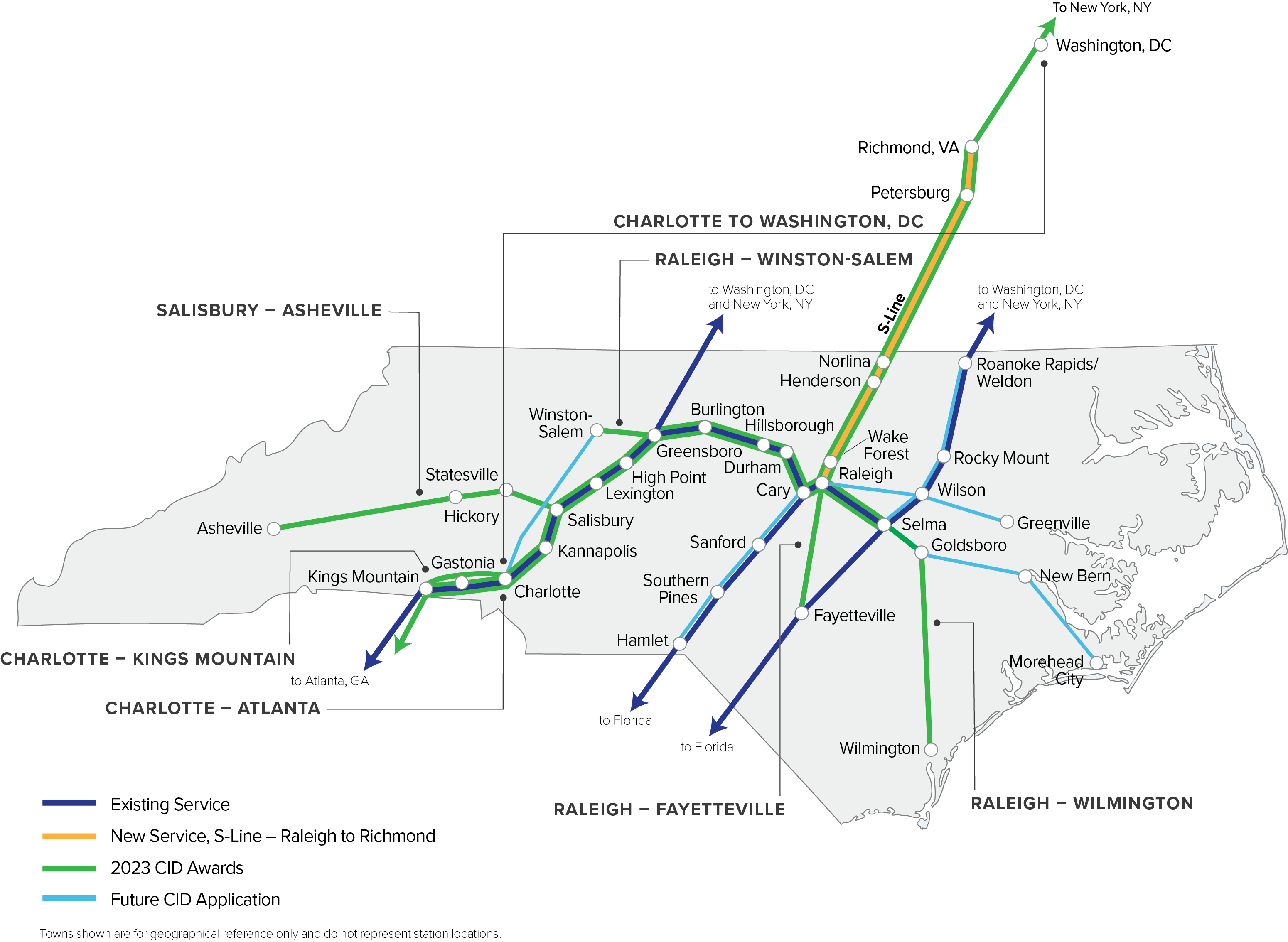So, vs the original list submitted, we have:
- Charlotte to Washington, DC
- Wilmington, NC to Raleigh, NC
- Charlotte, NC to Kings Mountain, NC
Greenville, NC to Raleigh, NC- Winston-Salem, NC to Raleigh, NC
Hamlet, NC to Raleigh, NCMorehead City, NC to Raleigh, NC- Fayetteville, NC to Raleigh, NC
Winston-Salem, NC to Charlotte, NCWeldon, NC to Raleigh, NC- Atlanta, GA to Charlotte, NC
- Salisbury, NC to Asheville, NC
Of the no-goes, Hamlet and Weldon were probably DOA because they didn't go through to either Columbia, SC or Norfolk, VA (respectively) while Morehead City and Greenville just don't have many people there. I
am surprised that Winston-Salem to Charlotte didn't get thrown in alongside Winston-Salem to Raleigh, however.
Edit:
I'm sort-of scratching my head at Charlotte-Kings Mountain falling under this program. It feels more like a bona fide commuter project (not that that's a
bad project to pursue), though in defense of it this one seems like it could conceivably pop out a station at the airport, which would probably be a pretty big traffic generator (I'm pretty sure that American would rather not have to bother with CLT-GSP flights anymore...).
One that's missing from the NC list (courtesy of stupid state borders) would be Charlotte-Columbia (that same issue was probably a fatal shortcoming in the Hamlet proposal).







